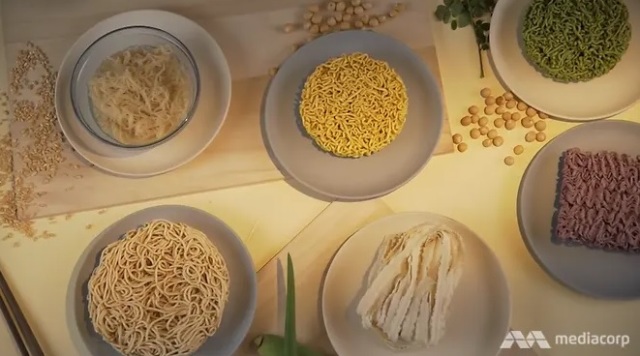Amid the growing demand, the question remains: Are they really healthy and all they are cut out to be? The programme Talking Point finds out two things about healthier instant noodles and whether these justify jumping on the bandwagon.
1. What's the hype?
First, healthier instant noodles are typically marketed as “non-fried”.
Prima Taste, for example, has produced air-dried wholegrain instant noodles since 2015. Wholegrains have been known to reduce stroke, the risk of high cholesterol and the risk of heart disease, says assistant general manager Melvin Tjahaja.
“There’s no added oil in the cooking process or in the drying process. As a result of that, our noodles have very low fat content — less than two per cent,” he adds.
“From what I know, regular instant noodles, which have gone through the flash-frying process, contain 15 to 20 per cent of fat.”
2. The ingredients change, but there's still wheat flour.
Regular instant noodles are made of refined wheat, which is known to be stripped of nutrients like fibre and minerals. That is why some manufacturers might opt for raw materials other than wheat for instant noodles.
But some non-wheat varieties are not exactly free of refined wheat, as explained by chef and food writer Sarah Benjamin Huang.
First, Bambara groundnut noodles: They contain twice as much protein as typical instant noodles and are loaded with fibre, which makes for a healthy gut. One also feels fuller for longer after eating these noodles.
Second, moringa leaves noodles: These are packed with two to three times more fibre than regular wheat instant noodles.
These two instant noodles seem healthier, but the catch is that they are not 100 per cent made up of nuts or leaves. Those ingredients come in around fourth on the list, says Huang.
The thing that makes noodles and pasta “really chewy” is wheat flour.
“You need the gluten from the wheat flour to hold the noodles together,” she adds. “You do have to have that as the main component if you want that familiar slurpy texture.”
The gluten from wheat flour is needed for that familiar slurpy texture of instant noodles.
That familiar slurpy texture.
Third, aloe vera noodles: They still contain a regular amount of wheat, except aloe vera is used to replace water in the manufacturing process.
This makes these noodles healthier by increasing the amount of potassium, which works in tandem with sodium to control blood pressure.
Finally, konjac noodles: These shirataki-based noodles are Japanese noodles made from konjac yam and are low in carbohydrates and calories. Unlike the previous three examples, konjac noodles do not contain wheat.

